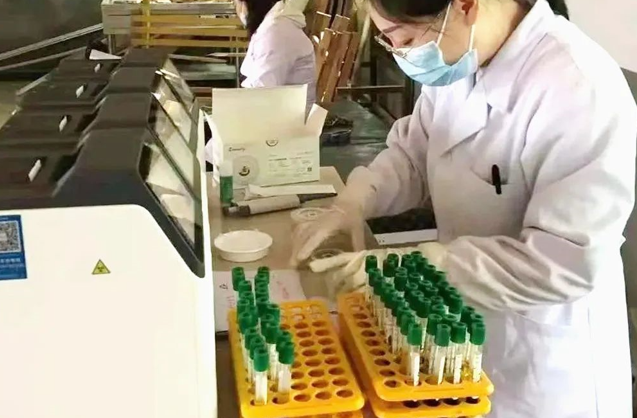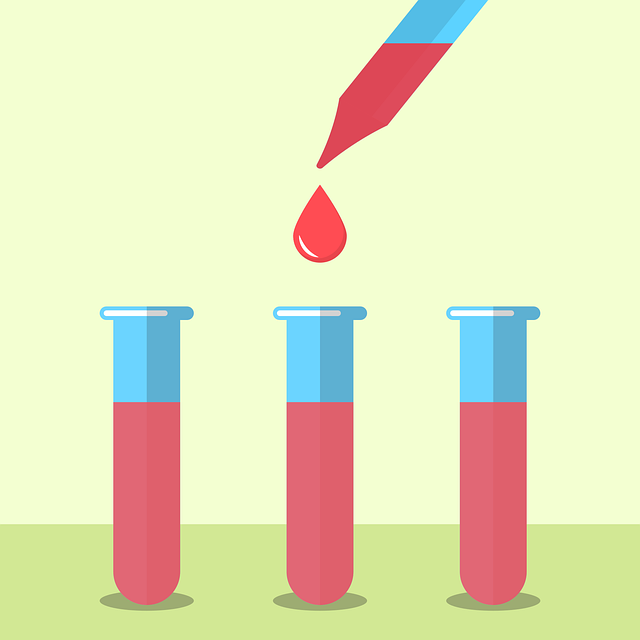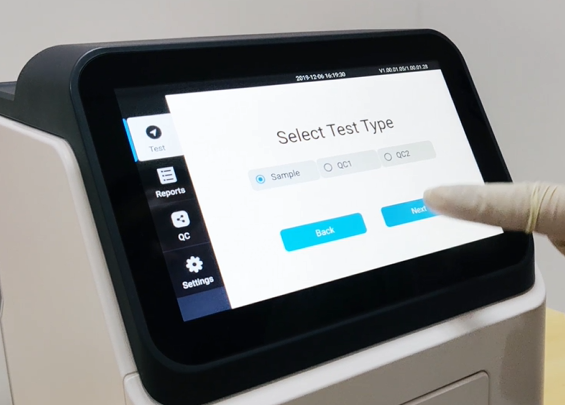1.Biochemical diagnosis
Biochemical diagnosis refers to the diagnostic method that involves enzyme reaction or antigen and antibody reaction, mainly used to determine biochemical indicators such as enzymes, sugars, lipids, proteins and non-protein nitrogen, inorganic elements, functional indicators or proteins.
Biochemical diagnostic reagents are mainly used for routine blood, urine, liver function, kidney function, pancreas, diabetes and other diseases. Biochemical diagnosis is the earliest automated test and one of the most commonly used in vitro diagnostic methods at present.
Biochemical diagnosis started early and is the most common traditional clinical test. Its technical barriers are relatively low.
Fully automated biochemical analyzer is easy to operate, fast detection speed, high precision, good repeatability, and test results are not affected by the operation. These are the direction of biochemical testing development.
Fully automatic biochemical analyzer after years of development, in technology has been very mature, such as Roche, Beckman, Abbott, Siemens, Johnson & Johnson, Hitachi and other companies have introduced superior performance, high speed, modular and can be linked with the immune high-end biochemical instruments.
From the market situation, large hospitals and large laboratories due to the technical parameters of the equipment, performance, brand requirements are relatively high. Generally, priority is given to large automatic biochemical analyzers. Small and medium-sized hospitals, due to the small sample size and the preference for cost factors, the general choice of medium-sized, small, portable biochemical analyzers.

2. Immunodiagnosis
Immunodiagnostic methods mainly include chemiluminescence, enzyme-linked immunoassay, colloidal gold, time-resolved immunoassay and radioimmunoassay.
In immunodiagnosis, chemiluminescence and enzyme immunoassay are the mainstream of the market. And chemiluminescence is gradually replacing enzyme-linked immunity. Compared with traditional biochemical diagnosis and other immunodiagnostic techniques, chemiluminescence has the advantages of good specificity, high sensitivity, accurate quantification, stable results and wide detection range. Therefore, chemiluminescence is rapidly spreading in clinical applications and is gradually replacing enzyme-linked immunoassay and other qualitative methods. It has also become the mainstream diagnostic technique in the field of immunoassay. In Europe and the United States,
chemiluminescence immunoassay technology has basically replaced enzyme-linked immunoassay as the mainstream of immunodiagnosis, accounting for 90% of the market share of immunodiagnosis.
2.1 Enzyme immunoassay
Enzyme-linked immunoassay is known as enzyme-linked immunosorbent assay (ELISA). Its technology is based on the solid phase of antigen or antibody and the enzymatic labeling of antigen or antibody. The basic principle is to pre-bind an antigen or antibody to a solid-phase carrier surface without damaging its immunological activity.
After adding the substrate for the enzymatic reaction, the substrate is catalyzed by the enzyme to become a colored product. The amount of product is directly related to the amount of the substance under test in the specimen. ELISA can measure both antigens and antibodies. There are three necessary reagents in ELISA: the solid phase antigen or antibody, or "immunosorbent"; the enzyme-labeled antigen or antibody, or "conjugate"; and the substrate for the enzyme reaction.
The basic procedure of ELISA
During the determination, the sample (including the antigen or antibody to be tested) and the enzyme-labeled antigen or antibody react with the antigen or antibody bound to the solid-phase carrier to form an antigen or antibody complex according to a certain procedure. When the reaction is terminated, the amount of enzyme-labeled antigen or antibody bound to the solid-phase carrier (immune complex) forms a certain ratio to the amount of antibody or antigen to be tested in the specimen. After washing to remove other substances from the reaction solution and adding the enzyme reaction substrate, the substrate is catalyzed by the enzyme on the solid-phase carrier to become a colored product. Finally, the amount of colored product is determined by qualitative or quantitative analysis of the amount of the measured substance in the sample.
The enzyme immunoassay technique was developed in the 1970s. It is widely used in clinical practice for the qualitative or semi-quantitative detection of various antigens and antibodies. Due to the low stability and sensitivity of the enzyme, it cannot achieve accurate quantitative analysis and is gradually being replaced by
fully automated chemiluminescence immunoassay for quantitative analysis.
2.2 Chemiluminescence
Immunochemiluminescence (CL, chemluminescence) is the phenomenon of light radiation produced by a chemical reaction that generates energy when an atom or molecule returns to the ground state from an excited state. According to the intensity of chemiluminescence to determine the substance content of the analytical method is called chemiluminescence analysis.
Chemiluminescence immunoassay (CLIA) is an analytical technique that combines a highly sensitive chemiluminescence measurement technique with a highly specific immunoassay for the detection of various antigens, semi-antigens, antibodies and hormones. It is the latest immunoassay technique developed after radioimmunoassay, enzyme immunoassay, fluorescence immunoassay and time-resolved fluorescence immunoassay.
2.2.1 Chemiluminescence principle
Chemiluminescence can be divided into direct chemiluminescence, indirect (enzymatic) chemiluminescence and electrochemiluminescence according to the reaction mechanism.
1) direct chemiluminescence refers to chemical substances. Such as isorubicinol, acridine ester, etc. directly labeled antigen or antibody. Chemiluminescence is completed within a few seconds, independent of changes in ambient temperature.
2) Indirect chemiluminescence refers to a chemical reaction in which the excited state product itself does not emit light or emits light very weakly, but the addition of a luminescent substrate can lead to luminescence. By measuring the intensity of luminescence for the detection of antigen or antibody.
3) Electrochemiluminescence is a specific chemiluminescence reaction on the surface of an electrode triggered by electrochemistry. Antibodies are directly labeled by tris-ruthenium. The marker emits light directly during the reaction.
Chemiluminescence is the mainstream technology direction of immunodiagnostic products. Based on the demand for testing, chemiluminescence detection systems are generally closed (same manufacturer of instruments and reagents). And its requirements for test accuracy are high, so the barriers are high.
Chemiluminescence systems are more difficult to develop.There are two main reasons.
One, chemiluminescence detection of antigens and antibodies for ug/L-pg/L level. Therefore chemiluminescence systems need to be more precise and standardized from development, production to use. There are more variables in reagent kit development. These include the pairing of antibody pairs, the dilution of "magnetic beads" and "enzyme label", the appropriate "formulation" solution, other kit components, incubation time, etc.
Second, chemiluminescence systems are generally closed. This is a high demand on the enterprise's ability to develop instruments and reagents. The detection instrument involves complex disciplines. The overall level of the instrument determines the lower limit of the detection system.
In the chemiluminescence market of in vitro diagnostics, international leading companies including Abbott, Siemens, Johnson & Johnson, Beckman, etc. occupy 70% of the domestic chemiluminescence market.



